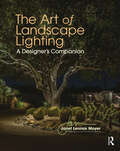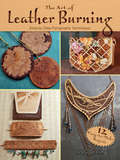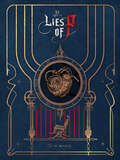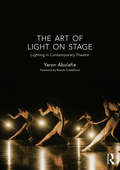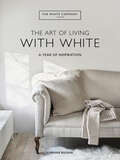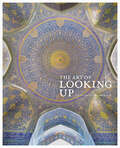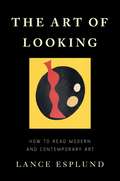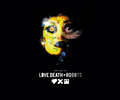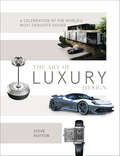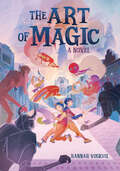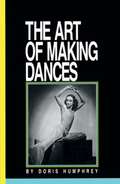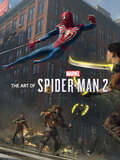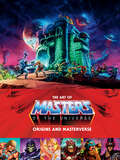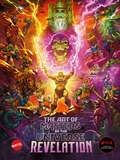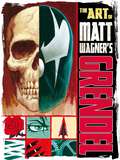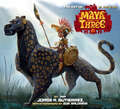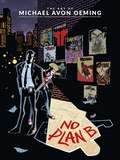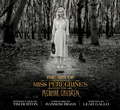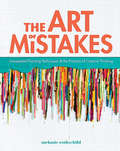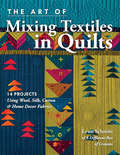- Table View
- List View
The Art of Landscape Lighting: A Designer's Companion
by Janet Lennox MoyerFollowing on from the critically acclaimed The Landscape Lighting Book, this is the lighting design companion every professional and student in landscape architecture needs. Written by an award-winning internationally renowned landscape lighting designer, with over 40 years’ experience in professional practice, The Art of Landscape Lighting takes the reader step-by-step through Janet Lennox Moyer’s design process. Personal and accessible in tone, the book covers tools, equipment, techniques, effects, installation, design composition and challenges using built case studies spanning the author’s career. Each project takes you through the process of how to plan compositions; selecting what should be lit and what should remain unlit; how to prioritize the importance of multiple elements; balancing brightness relationships; providing visual transportation across scenes; lighting the same space in different ways and, importantly, guidance on when designs are complete. Lavishly designed and illustrated with 450 full colour photographs, showcasing projects from start to finish, it additionally includes new landscape lighting equipment and techniques developed by Moyer throughout her career. This includes shore scraping, rainwall lighting, approaches for lighting water features and sculptures, and the 3-prong stake. Aimed at practicing professionals and students in landscape architecture, this book is the must-have inspirational resource that provides you with everything you need to design and implement landscape lighting across multiple scales.
The Art of Landscape Quilting
by Nancy Zieman Natalie SewellYou're in good company! 33 percent of quilters say landscape is their favorite quilt design, according to the latest Quilting in America survey. The Art of Landscape Quilting covers all aspects of designing and quilting landscape quilts through detailed instructions and concepts you will benefit from, regardless of your skill level. This one-stop resource for landscape quilting features 16 upscale step-by-step projects, and 20 partial projects; plus tips, tricks and techniques from the authors - including foremost sewing expert Nancy Zieman. With prints and supplies available at chains and independent shops, all you need is this book and your own creative sprit.
The Art of Landscape Quilting
by Nancy Zieman Natalie SewellMake every landscape a quilted masterpiece! Master fabric selection, design, cutting, painting, and more with detailed guidance from Nancy Zieman and Natalie Sewell Explore 50+ stunning quilts from the authors’ collections, along with nine finishing techniques to perfect your creations Learn to add structural elements, craft captivating water scenes, expand landscapes, and design unique stylized quilts, making every quilt a timeless masterpiece
The Art of Leather Burning: Step-by-Step Pyrography Techniques
by Lora Susan IrishLegendary wood and leather crafter Lora Susan Irish focuses solely on leather pyrography techniques and projects for the first time in this book. She presents instructions for a dozen easy-to-make projects, including jewelry, wallets, journals, and belts, in a spectacular array of patterns ranging from American West and Celtic motifs to wildlife and tattoo-inspired imagery. The completed projects are perfect for gift-giving or personal use.Moving from tools and supplies to pyrography and leather crafting basics; pattern techniques; leather selection; and the projects themselves, the book includes detailed, step-by-step directions with full-color photographs. Sidebars and tips offer helpful hints. This invaluable guide is ideal for experienced crafters as well as those who wish to acquire leather-crafting and leather-burning skills.
The Art of Lies of P
by NEOWIZ ROUND8 StudioAn oversized full-color art book chronicling the making of the hit video game.Geppetto&’s puppet is trapped in a web of lies. Fierce monsters and devious figures stand between the would-be real boy and the truth: who unleashed the plague that has plunged the once prosperous city of Krat into madness and blood lust?In Lies of P, an embattled puppet must adapt his weapons and his body to face untold horrors, untangle unfathomable secrets, and confront the consequences of both honesty and deceit.Dark Horse and ROUND8 Studio invite readers to explore this mysterious and thrilling world through a lovingly assembled collection of concept art, accompanied by intimate creator commentary. The Art of Lies of P is a darkly fantastic journey through the creation of the video game sensation.
The Art of Light on Stage: Lighting in Contemporary Theatre
by Yaron AbulafiaThe Art of Light on Stage is the first history of theatre lighting design to bring the story right up to date. In this extraordinary volume, award-winning designer Yaron Abulafia explores the poetics of light, charting the evolution of lighting design against the background of contemporary performance. The book looks at the material and the conceptual; the technological and the transcendental. Never before has theatre design been so vividly and excitingly illuminated. ? The book examines the evolution of lighting design in contemporary theatre through an exploration of two fundamental issues: ? 1.?????? What gave rise to the new directions in lighting design in contemporary theatre? 2.?????? How can these new directions be viewed within the context of lighting design history? ? The study then focuses on the phenomenological and semiotic aspects of the medium for light – the role of light as a performer, as the medium of visual perception and as a stimulus for imaginative representations – in selected contemporary theatre productions by Robert Wilson, Romeo Castellucci, Heiner Goebbels, Jossi Wieler and David Zinder. ? This ground-breaking book will be required reading for anyone concerned with the future of performance.
The Art of Living with White: A Year of Inspiration
by Chrissie RuckerIn this sequel to bestselling For the Love of White, Chrissie Rucker, founder of The White Company, teaches you how to harness the power of white and neutral colors to create a truly welcoming home, and provides specific tips and ideas for stylish living and celebrations to enrich each season of the year.“I love a home to feel warm, inviting, personal and lived-in – and mastering how to decorate with white and neutrals is a wonderful way to achieve this.”—Chrissie RuckerIn her much-anticipated second book, The Art of Living with White, Chrissie Rucker, Founder of The White Company, explores 10 inspirational homes that illustrate beautifully different ways to use white and neutrals through the seasons. The homes vary in size, style and location—from a minimalist city pied-à-terre to a New England-style country house—but what unites them all is the welcoming, stylish and calm feel that their owners have each created.The homes are grouped into the four seasons and each chapter ends with a summary of seasonal rituals that will work in any home. A concluding chapter—Inspiration & Resources—considers finding your own style, how to create a good balance between work and home in interior spaces, the art of simple entertaining and the importance of scent and touch in a truly comfortable home.“A passion for white unites this collection of homes, but it is each owner’s authentic creative imprint, that brings the art of living with white to life, in different ways. With each home comes personality, warmth and that elusive sense of comfort and calm,” Chrissie explains “I really hope you will enjoy all the wonderful ideas these very different, enriching homes offer. They have all captured my imagination in their own unique way, and I hope they spark the seed of fresh inspiration for you too.”The Art of Living with White is illustrated with 250 spectacular full-color photographs throughout.
The Art of Looking Up
by Catherine McCormackA guide to spectacular ceilings around the globe that have been graced by the brushes of great artists including Michelangelo, Marc Chagall and Cy Twombly.From the lotus flowers of the Senso-ji Temple in Japan, to the religious iconography that adorns places of worship from Vienna to Istanbul, all the way to Chihuly’s glass flora suspended from the lobby of the Bellagio Hotel in Las Vegas—this book takes you on a tour of the extraordinary artworks that demand an alternative viewpoint.Art historian Catherine McCormack guides you through the stories behind the artworks—their conception, execution, and the artists that visualized them. In many cases, these works make bold but controlled political, religious or cultural statements, revealing much about the society and times in which they were created. Divided by these social themes into four sections—Religion, Culture, Power and Politics—and pictured from various viewpoints in glorious color photography, tour the astounding ceilings of these and more remarkable locations:Vatican Palace, Rome, ItalyBlenheim Palace, Oxfordshire, UKLouvre Museum, Paris, FranceDali Theatre-Museum, Figueres, CataloniaMuseum of the Revolution, Havana, CubaCapitol Building, Washington, DC, USAFour eight-page foldout sections showcase some of the world’s most spectacular ceilings in exquisite detail.First and foremost, this is a visual feast, but also a desirable art book that challenges you to seek out fine art in more unusual places and question the statements they may be making.“Deepens our perspective of 40 of the most artistic, fascinating and iconic ceilings around the world.” —Forbes
The Art of Looking: How to Read Modern and Contemporary Art
by Lance EsplundA veteran art critic helps us make sense of modern and contemporary artThe landscape of contemporary art has changed dramatically during the last hundred years: from Malevich's 1915 painting of a single black square and Duchamp's 1917 signed porcelain urinal to Jackson Pollock's midcentury "drip" paintings; Chris Burden's "Shoot" (1971), in which the artist was voluntarily shot in the arm with a rifle; Urs Fischer's "You" (2007), a giant hole dug in the floor of a New York gallery; and the conceptual and performance art of today's Ai Weiwei and Marina Abramovic. The shifts have left the art-viewing public (understandably) perplexed.In The Art of Looking, renowned art critic Lance Esplund demonstrates that works of modern and contemporary art are not as indecipherable as they might seem. With patience, insight, and wit, Esplund guides us through the last century of art and empowers us to approach and appreciate it with new eyes. Eager to democratize genres that can feel inaccessible, Esplund encourages viewers to trust their own taste, guts, and common sense. The Art of Looking will open the eyes of viewers who think that recent art is obtuse, nonsensical, and irrelevant, as well as the eyes of those who believe that the art of the past has nothing to say to our present.
The Art of Love, Death + Robots
by Ramin ZahedImmerse yourself in the official collection of artworks from the first three volumes of Love, Death + Robots, and discover the stories and inspirations behind this beloved Netflix series.Love Death + Robots is a Netflix series like no other—a breath-taking journey of mature, high-concept tales told with seductive characters, astounding plots, and explosive action. With each episode crafted by different animation teams across the globe, the thought-provoking anthology covers a vast range of animation styles from edgy 2D to stop-motion to anime to hyper-realistic 3D CG. In this luxury book, discover the wealth of artwork and stories behind the creation of the series&’ first three volumes. Includes interviews with key artists and creatives such as series creators Tim Miller and David Fincher, and is full to the brim with everything from beautiful concept art, character studies, costume sketches, paintings, vehicle designs, storyboards, and early vision decks, through to finished frames. Perfect for any fan of animation.
The Art of Luxury Design: A Celebration of the World's Most Exquisite Goods
by Steve HuytonIn this collection of all-new objects of desire, nearly 300 images showcase the talents of some of the world's most creative designers—some instantly recognizable, others up and coming: • Maserati • Aston Martin • Jaeger-LeCoultre • Ralph Lauren Timepieces • Coates Design • House + House Stunning photos range from "machines for living," such as highly engineered houses, cars, and watches, to fine household objects, electronics, and appliances, all accompanied by information about the concept and brand. From electric hypercars to a showstopping glass pool table and a Ferrari-engine-inspired espresso machine, these pristine objects exist in a rarefied realm, offering their owners the ultimate in comfort, performance, and aesthetic pleasure.
The Art of Magic: A Novel
by Hannah VoskuilA pack of paints, a set of pens, and unlimited creativity throw two friends into an enchanted, fast-paced adventure. ZuZu's first summer without her best friend is looking pretty grim, until she meets new kid Andrew at a visit to the historic Mapleton Mansion. Together they stumble upon some enchanted art supplies and discover that the shapes they draw and paint can come to life. Their creations are harmless—but ZuZu and Andrew aren't the only ones with access to magic. Soon, nightmarish half-machine, half-living creatures begin appearing around town, controlled by a power-hungry "caster" with a sinister mission. It's up to ZuZu and Andrew to use their newfound abilities to protect their community. "There are deliciously chilling descriptions of scuttling, otherworldly creations and resurrections gone awry, but there is also delight to be found in enchanted artwork and blossoming friendships. A thrilling introduction to a newfangled magic."—Booklist "A satisfying, compelling adventure with an original magical construct and bright, appealing protagonists."—Kirkus Reviews "The magical rules created by Voskuil feel exciting . . . . This creative fantasy will move well with fans of Tae Keller's When You Trap a Tiger."—School Library Journal
The Art of Making Dances
by Doris HumphreyWritten just before the author's death in 1958, this book is an autobiography in art, a gathering of experiences in performance, and a lucid and practical source book on choreography.
The Art of Marvel Rivals
by NetEase GamesA full-color hardcover art book collecting art and developer commentary chronicling the creation of the new multiplayer class-based shooter starring heroes and villains from across the Marvel Multiverse.In Marvel Rivals, players can select from an ever-growing roster of their favorite Marvel characters to launch into combat through Multiverse-inspired battlefields. There, they fight alongside teammates against a group of equally skilled foes to see who will emerge victorious!Explore the development of freshly reimagined icons like Iron Man, Namor, Storm, and many more—including their imitable skills and equipment, and a vast wardrobe of unique costumes. The action all takes place across maps inspired by Marvel's most recognizable locales—from the spires of Yggsgard to the depths of Hydra&’s Hive World—concept art for all of which can be analyzed in extreme detail.The Art of Marvel Rivals is a must-have tome for any fan of multiplayer shooters, super heroic action, or breathtaking competition across Marvel&’s Multiverse!
The Art of Marvel's Spider-Man 2
by Insomniac GamesWeb-sling into action with an oversized hardcover art book chronicling the development of Marvel&’s Spider-Man 2 through never-before-seen concept art and intimate creator commentary.Peter Parker and Miles Morales return for an exciting new adventure in the critically acclaimed Marvel&’s Spider-Man video game saga. As the inimitable web-heads swing, jump, and glide across Marvel&’s New York, the iconic villains threaten to destroy their lives, their city, and the ones they love. Now readers can explore the creation of this dynamic new entry in the Spider-Man video game series—from unforgettable characters, extraordinary equipment, breathtaking locales, thrilling storyboards, and more—all accompanied by comments from the game&’s creative team!Dark Horse Books and Marvel Games have joined forces to present The Art of Marvel&’s Spider-Man 2. This passionately designed volume celebrates the art and artistry behind the Wall-Crawlers and their exploits, and provides fascinating insights to amaze any Spider-Fan!
The Art of Masters of the Universe: Origins and Masterverse
by Mattel Alex IrvineHeroes and Villains of Origins and Masterverse come alive!This beautifully designed volume gives a deep dive into the lore and world of the Mattel hit figure lines, Masters of the Universe: Origins and Masterverse. Explore each figure&’s background, as well as detailed and wonderfully laid out artwork from the products themselves. Also, the tome will feature new insights from the creators of the figures, written by Alex Irvine (The Comic Book Story of Baseball, Marvel Phase One through Three)!Dark Horse Books and Mattel proudly present: The Art of Masters of the Universe: Origins and Masterverse!
The Art of Masters of the Universe: Revelation
by MattelA one of a kind, oversized hardcover exploring the newest addition to the Masters of the Universe world!Diving deep into the process of the show, this tome features detailed explorations into your favorite aspects of the show. Explore character art from the development stages to the finished product, as well as extensive looks at the world and locations of Eternia! Dark Horse Books, Mattel, and Powerhouse Studios proudly present The Art of Masters of the Universe: Revelation. A look into the world that will leave you yelling &“I have the Power!&”
The Art of Matt Wagner's Grendel
by Matt WagnerOver two and a half decades, what began as the story of Hunter Rose, the talented young author who became the city's most feared assassin and criminal overlord, evolved into a prolonged examination of authority, society, and that dark mechanism of nature — violence. Now, take a step inside one of the most daring comic book projects ever created as Matt Wagner guides you through the artwork that changed contemporary comics forever. As beautiful and graceful as it is thrilling and surprising, each piece — many seen for the first time or previously long out of print — brings you deeper into the seductive mystery that is Grendel.
The Art of Maya and the Three
by Jorge GutierrezA vibrant, oversized hardcover showcasing the concept and production art from the beautiful Netflix series by visionary animator and filmmaker, Jorge R. Gutierrez. Meet Maya, the eagle-warrior princess and all the dazzling characters that breathe life into lush and detailed landscapes magically inspired by Mesoamerican, Incan, and Caribbean cultures. Behold the original vision for the series taken from early sketches to final animated wonders, with detailed storyboards, color scripts, and in-depth, bilingual (English and Spanish) commentary. Welcome to the vivid world of Maya and the Three! Bilingual Captions in English and Spanish.
The Art of Memory: Historic Cemeteries of Grand Rapids, Michigan (Painted Turtle Ser.)
by Thomas R. DilleyIn the late nineteenth century and early twentieth century, the look and feel of cemeteries in the United States changed dramatically, from utilitarian burial grounds to the serene parklike spaces that we know today. The so-called park cemetery was innovative not only for its distinctive landscape architecture but also because its staff designed, ran, and maintained the cemetery, which led to a very consistent appearance. By the mid-1800s, the influence of park cemeteries began to spread from big cities on the East Coast to the Midwest--eventually producing fifteen transitional examples in Grand Rapids, Michigan. In The Art of Memory: Historic Cemeteries of Grand Rapids, Michigan, Thomas R. Dilley details the history of Grand Rapids' park cemeteries, finding that their development mimicked national trends and changing cultural beliefs about honoring the dead. Dilley begins by outlining the history and evolution of cemetery design from its earliest days to the present, including information about key design elements and descriptions of important designers. He continues by introducing readers to the fifteen historic cemeteries located in the city of Grand Rapids, detailing their histories, formats, and developmental changes along with more than two hundred photos. The cemeteries are divided between public and private properties, and are discussed chronologically, according to the dates of their founding. Dilley also considers the artistic and architectural forms that appear in the Grand Rapids cemeteries, including a thorough discussion of the religious and decorative symbols used on markers, the use of sometimes florid epitaphs, and variations in the form, structure, and materials of cemetery markers of the time. A brief section on the future of the cemetery and an extensive list of bibliographic sources and suggestions for further reading round out this informative volume. Readers with roots in Grand Rapids as well as those interested in social and cultural history will enjoy The Art of Memory.
The Art of Michael Avon Oeming: No Plan B
by Michael Avon OemingMike Oeming never prepared for any way to make a living other than drawing. Now the co-creator of Powers, United States of Murder, Inc., Takio, Mice Templar, and more offers an in-depth look into his artistic archives, the creative process, and a career that has touched every corner of the comics industry over the last thirty years, from The Mighty Thor and Cave Carson to dark, personal work and video games. He talks to John Siuntres of the Word Balloon podcast about long-term creative partnerships with Brian Michael Bendis, David Mack, and Taki Soma, and explores the secrets of thriving through the ups and downs of the comics industry. Previously unpublished artwork includes whole pages from Powers, The Victories, and other series, as well as collaborations with Mike Mignola, Eric Powell, Kevin Smith, Douglas Rushkof, Gerard Way, and video-game developer Valve …With an introduction by Brian Michael Bendis and an afterword by David Mack.
The Art of Mirror's Edge: Catalyst
by VariousTake a behind-the-scenes journey into the richly detailed yet minimalist totalitarian futuristic universe of Mirror's Edge™ Catalyst with this oversized hardcover art book! Each glossy page is jam-packed with never before seen art, commentary, and insight from the creators of the game! See the concepts behind Faith and her world take shape! From freeruning up the tallest skyscrapers to delving into the secrets of the Mirror's Edge world, both fans and newcomers alike won't want to miss this beautiful art book experience! The Art of Mirror's Edge Catalyst will be released by Dark Horse simultaneously with the game.
The Art of Miss Peregrine's Home for Peculiar Children
by Ransom Riggs Tim Burton Leah GalloA stunning visual tour of Miss Peregrine's Home for Peculiar Children, filled with exclusive interviews, on-set photography, and special introductions by director Tim Burton and Peculiar Children series author Ransom Riggs.Tim Burton's adaptation of the Ransom Riggs novel Miss Peregrine's Home for Peculiar Children is one of the most anticipated films of the year--and this lavishly illustrated companion offers a thrilling behind-the-scenes look. Written and designed by two of Burton's longtime collaborators, this book chronicles every step in the making of the film--from script development and casting to concept art, set design, costumes, visual effects, and much more. Filled with exclusive interviews, on-set photography, and special introductions by Tim Burton and Ransom Riggs, this deluxe hardcover volume is a terrific gift for peculiars of all ages!
The Art of Mistakes: Unexpected Painting Techniques and the Practice of Creative Thinking
by Melanie RothschildYou can make art and deeply appreciate the Art of Mistakes. When it comes to mistakes, we're all experts. Really. Yet fear of making mistakes often holds us back from trying new things. Inside, you will discover how our mistakes can be powerful opportunities for new ideas that we could never think up deliberately. Whether you are a seasoned artist, or just getting started, learning to embrace and use mistakes can spell the beginning of a new chapter in your art-making life. Perhaps you were told by a former teacher or "expert" that your drawing or painting wasn't good enough, or you've had your creativity stymied in some other way. Maybe you have artistic impulses and desires but feel like you aren't one of the "chosen few" who can make art. Now you can learn ideas and painting techniques that show you a way of creative thinking that turn even your mistakes into beautiful works of art! "Of all places, art is a spot where mistakes should be considered honored guests." 16 painting techniques to encourage creative thinking and experimentation Permission to make mistakes as you make art. Methods to discover how mistakes can serve your art and creativity
The Art of Mixing Textiles in Quilts: 14 Projects Using Wool, Silk, Cotton & Home Decor Fabrics
by Lynn SchmittBring a new level of richness and variety to your quilts with this guide to mixed-fabric quilting.It’s time to go beyond cottons. With The Art of Mixing Textiles, you will learn how to blend your standard quilting fabrics with rich wools, lustrous silks, and textural home decor fabrics for quilts that beg to be touched. Quilt designer Lynn Schmitt teaches you the secrets to cutting, piecing, sewing, and pressing fabrics of texture and sheen. The step-by-step instructions in this volume make it easy to get started. The 14 pieced and appliquéd projects include table runners, quilts, pincushions, tote bags, and more. Dimensional and exciting, mixed-fabric quilts are ripe for using up scraps and expanding your horizons!
